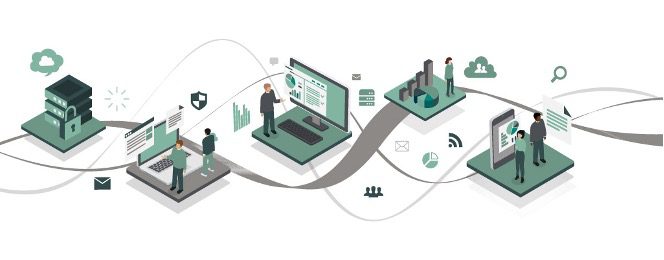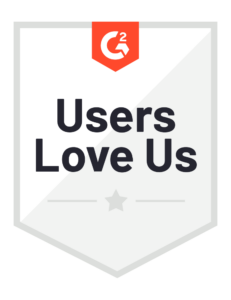3 Steps for Achieving a Continuous Close Accounting Process in the Office of Finance
Blog post
Share
Explore a Continuous Close Process and Real Time Data Processing With CadencyDirect® by Trintech and ServiceNow®
Closing the books.
A deceptively simple phrase for what is often a deeply complex, risk-prone process — and for many enterprise companies it is a major source of stress and organizational burden. It’s a process that repeats itself month after month, quarter after quarter and brings with it days with huge levels of effort and stress, followed by periods of “business as usual.”
For some companies, closing the books is a process that takes up to one-third of the calendar year.
But what if the entire process could become “business as usual,” instead of the current pitfalls and employee burnout associated with the last few days of the month-end financial close?
For top-performing Offices of Finance, this is exactly the goal: continuous close accounting.
3 Steps to a Continuous Close Accounting Process
Rather than performing all the month-end activities at month-end, the close activities are broken up across the month (or quarter, or year) so that when it’s time to close the books, it’s no longer an extremely daunting process, a rush to finish or a source of major risk. The close instead becomes a smooth, controlled process that leaves the company’s team with time to perform other value-add benefits like predictive financial analysis, real time data processing and other reporting that was previously not possible.

Deloitte recently published their predictions for what the Office of Finance will look like in 2025, and one of the key predictions was that finance will happen in real time. Top-performing companies can no longer wait for the month-end numbers to be finalized in order to make key business decisions.
But getting to continuous close accounting is not simple without the right processes, standards and protocols in place. According to a 2019 global FSN Survey about the future of business partnering, business processes that lack standardization, automation and unification are the key culprits preventing organizations — especially those with more than 3,500 employees — from becoming true business partners.
Step 1: Standardization
The period-end close process has historically relied on people over processes to drive completion, relying on employees to simply “know what needs to be done” in order to close the books. As companies grow and scale and accounting standards have become increasingly stricter, those informational siloes are no longer effective, if they ever were.
Instead, companies must seek out tools that help them standardize the close process, tools like CadencyDirect, which offers powerful workflow and controls functionality to ensure not only are certain key close activities being performed, but they’re performed correctly, at the right time and by the right person. By documenting and standardizing the cyclical, repetitive steps of the financial close, companies can ensure crucial steps are never missed or performed incorrectly due to a simple lack of process understanding.
Furthermore, if and when exceptions occur, there are built-in tools to capture those exceptions and remediate them in a single tool with audit trails and clear chains of ownership, thus eliminating the need for companies to worry about manual errors and exceptions impacting their financial close.
And with the process clearly documented and standardized, large and complex companies can easily view their financial close process holistically, across global entities and various business processes. This visibility allows top-performing companies to think critically about gaps in their close or perhaps even processes that aren’t needed.
Only once this kind of evaluation and visibility is gained can a company then look at redistributing those key close activities across the entire period, rather than waiting to complete it all at once in the traditional financial close window.
Step 2: Automation
Once a standardized process has been achieved, it’s time for companies to consider how automation can benefit their processes.
There are certain pieces of the financial close process that are extremely repetitive and don’t require deep analysis, nor do they present a large inherent risk. These processes are ripe for automation, which can yield huge time savings for organizations, freeing up employees to focus on higher-value processes and analysis. With strong automation in place, employees shift from focusing on the highly manual, low-risk work to focusing on exceptions and high-value work.

CadencyDirect offers not only automation, but Trintech’s Risk Intelligent Robotic Process Automation™ (RI RPA). This means companies can be assured that certain risk factors are taken into account when processes are automated. For instance, a journal posted above a configured amount will trigger additional levels of approval, versus a journal with a lower risk in a process. This capability is known as Dynamic Approver Routing (DAR).
Automation is a big step to achieving a continuous close accounting process, because the more that can be automated, the less manual work remains for employees to actually perform at the end of a period. Furthermore, if automation is continuously run throughout the period, real time data processing is now available that wouldn’t have otherwise been available earlier in the cycle.
Automation extends beyond simply automating key tasks to include integration, such as integration with an enterprise resource planning (ERP) system. Solutions such as CadencyDirect connect with third-party systems like the ERP landscape. With CadencyDirect’s built-in connectors and APIs, companies can have access to data in separate systems through one system of controls. Now, teams don’t have to rely on manually uploading and updating the data as it’s manipulated and refreshed in the source system.
This real-time data is another key step in achieving continuous close — and a close process is only as strong as its data.
Step 3: Unification
Ultimately, even a standardized and largely automated process means nothing if it’s being conducted in a silo.
The period-end process, while largely dependent on the Record to Report (R2R) team for success is not localized to just that team, nor is the work complete once the last accounts are certified or the final journal for the period posted. A successful period-end close is holistic with strong visibility across the entire Office of Finance and indeed the entire business.
With the ServiceNow application for the Office of Finance, CadencyDirect, the necessary extension and unification of processes is easy and even in line with a digitalized process that is already underway at many companies. CadencyDirect on the Now Platform® is the only native-built application on the ServiceNow platform that is designed specifically for the unique needs of the Office of Finance.
CadencyDirect delivers real time data processing and visibility into the financial close process to the Now Platform® so even teams outside of the R2R process may gain the necessary insights and data visibility in real time, bringing that all-important real-time data to ancillary but vital teams such as FP&A, Consolidation and Disclosure and Reporting. No longer are these teams reliant on individuals within other areas of the Office of Finance — potentially in different regions and time zones, even — to provide updates and data about the financial close process. They can simply view the data and details necessary to their respective processes, in real time throughout the period-end cycle.
This real time data processing and accessibility ensures teams don’t act as roadblocks for each other, but rather as enablers.
And with the unique functionality native to CadencyDirect, teams can be automatically notified when key activities are performed throughout the period-end close cycle.

For instance, a company may track the posting of all recurring journals as a task in CadencyDirect. Once that task has been closed, a notification in the ServiceNow platform can be configured to notify the Consolidation team of this important milestone. Subsequently, if an issue arises in this process, or if the task is reopened, the same team can be notified that the task is incomplete, or if an issue has arisen that may impact work downstream.
Similarly, any key Governance, Risk and Compliance tasks being tracked in CadencyDirect may be configured to notify the GRC team upon their completion, creation, or any resultant issues. This real-time visibility ensures that teams are working in lockstep with each other, simultaneously independent of each other but deeply interconnected. Without this deep process unification, a continuous close is not easily achievable.
CadencyDirect by Trintech and ServiceNow® Offer a Blueprint for a Continuous Close
The benefits of a continuous close are evident, but the path there may seem intimidating for organizations in the midst of a difficult, manual or unstandardized close.
CadencyDirect can offer a path to continuous close accounting and its associated benefits. Trintech is ready to partner with your organization, no matter where you are in your digitalization journey. Whether you’re an existing ServiceNow customer, new to the world of automation or somewhere in between, find out how CadencyDirect by Trintech and ServiceNow can bring continuous close, and all its benefits, to your company.
Learn more about this journey here.
Written by:
Sam King
Senior Product Owner







